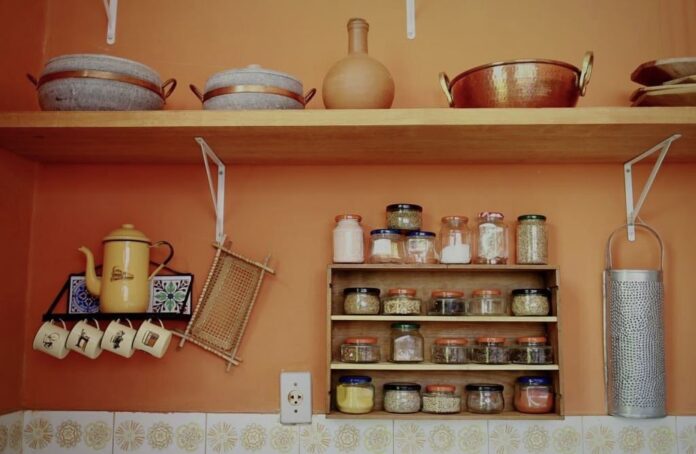Even though it may surprise some, plastic and glass storage containers are not completely interchangeable with one another. When it comes to organizing the kitchen, each material has its advantages and disadvantages. While deciding which container is best for you and your family, it’s essential to consider why these two materials surpass one another in different ways.
Below are our side-by-side comparisons of glass and plastic containers to assist you in determining which is the superior choice for your kitchen.
Plastic Containers
Plastic containers are lightweight and portable, and they will not break if they are accidentally dropped. Plastic, on the other hand, is a major polluter. According to the Environmental Protection Agency, the United States produced more than 14 million tons of plastic containers and packaging in 2010. Surprisingly, most municipal recycling programs are either unable to recycle or do not recycle this type of plastic. According to the Environmental Protection Agency (EPA), only 14 percent of plastic containers and packaging were recycled in 2012
One of the most significant issues with plastic containers is the potential health risks involved with heating them. Bisphenol-A (BPA) and phthalates are two plasticizers that have been linked to adverse health effects in humans. These substances, known as “endocrine disrupters,” mimic human hormones and are associated with long-term health risks. When heated, the plastic may seep into the consumed food or beverage. Some acidic foods can induce leaching even when they are not heated.
Glass Containers
We are aware that glass can securely handle hot liquids and meals. When heated, a glass food storage container ensures that potentially hazardous contaminants do not seep into our meals.
I am encouraged to use glass containers for food storage by this alone, but there are further benefits:
Glass is more hygienic than plastic. The nonporous nature of glass does not absorb food or bacteria (and smells). High-temperature glass washing is possible in dishwashers without causing damage. Because glass containers may be reused, you can save money. According to the Glass Packaging Institute, glass is 100 percent recyclable and may be recycled indefinitely without losing its quality or purity. It is also biodegradable. It is not necessary to allow glass containers to cool completely before storing leftovers. Glass containers, as opposed to ceramic or stainless-steel containers, allow you to view what is inside. Because you can see inside a glass container, you can keep an eye on your food while it preheats without worrying about it becoming contaminated.
Plastic vs. Glass Food Storage Containers: Step by Step Comparison
Glass Is Best for Environment
First and foremost, recycle. When treated with care, glass containers are both long-lasting and 100 percent recyclable. Unfortunately, the majority of municipal recycling programs are unable to recycle all types of plastic. Municipal initiatives that recycle plastic labels with numerical symbols are available in some, but not all, instances. According to a recent study, around 6300 metric tons of plastic garbage was generated in 2015, with only 9 percent of that waste being recycled. Plastic containers made from recycled materials, such as those from Preserve, are the only ones that can compete with glass in terms of environmental benefits.
Glasses Is Health Friendly
When food is microwaved, it is possible that even BPA-free plastics can leak into the meal. Because glass is nonporous, it does not absorb liquids like plastic, and it can be washed in the dishwasher at higher temperatures without melting or warping, unlike plastic.
Plastic Containers Are Best for Bringing Lunch
Plastic containers are, by far, the most convenient type of storage container. They are substantially lighter compared to glass and will not break if dropped. Some containers, such as these Glad containers, include a cover that can be used to store small dressing or sauce containers. Take your lunch in 32-ounce plastic deli containers, recommends Erika Owen, an Epi worker at the hospital.
Plastic Boxes for Kids Lunch
Plastic is the ideal alternative for packing school lunches for the same reasons. Anya Hoffman prefers this portioned option because it has small compartments for different objects.
To Refrigerate Leftover Foods Glass Containers Works Best
Glass, particularly OXO’s set, is excellent for use in the refrigerator or freezer. Each of the containers is freezer-safe, leak-proof, and simple to clean up after. In addition, when glass is frozen, it does not release poisons. Using Pyrex’s glass bakeware plates, you may prepare big quantities of food and freeze half of it for later use.
Plastic Containers Are Space Saving
While glass containers can be stacked like a Russian nesting doll, they cannot be collapsed like certain modern plastic storage containers. Many Amazon reviews for collapsible containers praise their convenience for camping, picnics, and other vacation activities. Plastic is preferred for large loads.
Glass Containers for Aesthetics
Personally, I like to serve a food in glass containers rather than plastic containers. Furthermore, they do not collect scents or stains, so there will be no horrifying marinara darkening after repeated use. Glass, particularly Pyrex, has a special place in my heart, as does open shelving space in modern or antique patterns.
Final Verdict
I don’t use plastic containers because of the health risks they pose. Instead, I avoid them out of caution. However, keep in mind that plastic containers should only be used for cold or dry food storage. You should also learn about plastics. Look at the bottom of your container for the resin identification code, a triangle with a number from 1 to 7. This code identifies the container’s plastic type. The safest options for food preparation are 1, 2, 4, and 5. Three is vinyl or PVC, six is polystyrene, and seven is any of a variety of different polymers. BPA is also found in some plastic containers with the numbers 3 and 7.
My advice is to use glass food storage containers wherever possible. They are less convenient, but they may be used for both hot and cold foods, making them ideal for home food storage.


















